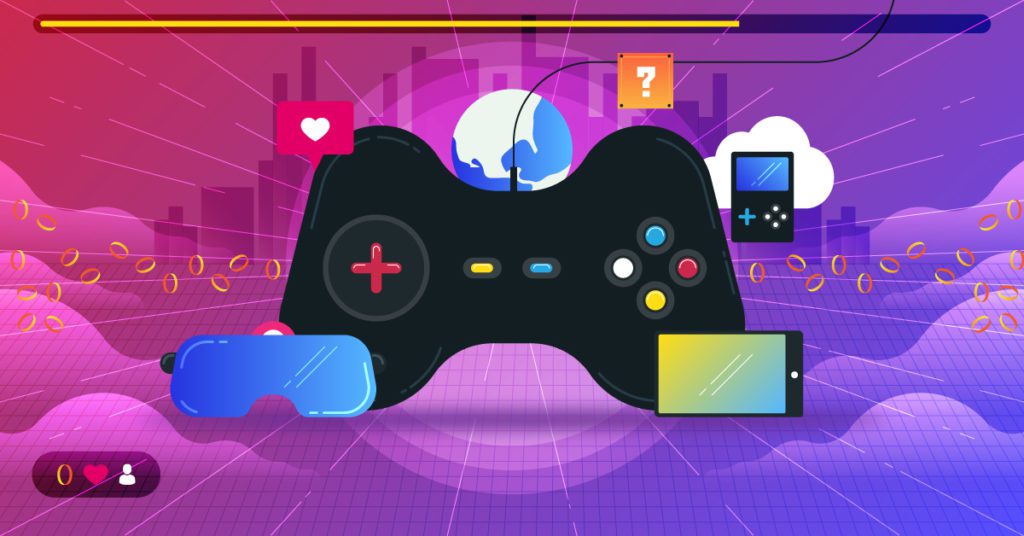How Are Free-to-Play Web3 Games Paving The Way For Mass Adoption In The Blockchain Gaming Landscape?

Web3 games, powered by blockchain technology, are poised to reshape the gaming industry by introducing new possibilities for ownership, interoperability, and decentralized economies. Among the various models in the blockchain gaming space, the Free-to-Play (F2P) model emerges as a key driver for mass adoption. Let’s explore the reasons behind the pivotal role of Free-to-Play Web3 games in achieving widespread adoption:
Role of Free-to-Play Web3 games in achieving widespread adoption:

1. Lowering Entry Barriers:
- Traditional Barriers: In traditional gaming, the need to purchase a game or in-game items can be a significant barrier for many potential players.
- F2P Advantage: Free-to-Play models eliminate this initial financial barrier, allowing players to join and experience the game without upfront costs. This inclusivity attracts a broader user base, fostering a more diverse and engaged community.
2. Accessible Onboarding Experience:
- User-Friendly Onboarding: Free-to-Play Web3 games often provide a seamless onboarding experience, minimizing the friction for new users to understand blockchain concepts and acquire digital assets.
- Educational Opportunity: As players engage with the game, they organically learn about blockchain principles, wallet management, and the value of digital assets, contributing to a more educated and empowered user base.
3. Incentivizing User Engagement:
- Earning Rewards: Free-to-Play Web3 games leverage blockchain to reward players with native tokens, NFTs, or other valuable assets. These rewards incentivize continued engagement and progression within the game.
- Ownership Incentive: The ability to truly own and trade in-game assets creates a compelling incentive for players to invest time and effort in the game, knowing that their virtual achievements have real-world value.
4. Decentralized Ownership and Interoperability:
- True Ownership: Web3 games embrace the concept of true ownership, allowing players to have verifiable ownership of in-game assets as NFTs. This ownership extends beyond the game, providing users with the freedom to trade or use their assets in other compatible games.
- Interoperability: F2P Web3 games often promote interoperability, enabling assets acquired in one game to be utilized in a different game, fostering a cross-game ecosystem. This interconnectedness enhances the overall gaming experience and encourages players to explore various projects.
5. Decentralized Economies and Play-to-Earn:
- Empowering Players: Free-to-Play Web3 games empower players by introducing play-to-earn mechanics. Players can earn valuable rewards by participating in the game, which can include tokens, NFTs, or other tradable assets.
- Economic Inclusivity: Play-to-earn models contribute to economic inclusivity, allowing players from various backgrounds to earn real value through their gaming activities. This can be especially impactful in regions with limited access to traditional financial opportunities.
6. Community Building and Social Engagement:
- Community-Centric Design: F2P Web3 games often focus on building vibrant communities around their ecosystems. Free access attracts a large player base, fostering social interaction, collaboration, and the formation of player-driven communities.
- Player-Driven Economies: Communities within Free-to-Play Web3 games actively contribute to the development of player-driven economies. Players trade assets, share strategies, and collectively shape the in-game ecosystem.
7. Evolution of In-Game Economies:
- Dynamic Economies: Free-to-Play Web3 games introduce dynamic and evolving in-game economies. As player participation and demand for certain assets increase, the value of those assets can fluctuate, creating a dynamic and engaging economic landscape.
- Market Dynamics: The integration of decentralized finance (DeFi) concepts within games allows players to participate in decentralized exchanges, lending, and other financial activities, enhancing the overall gaming experience.
8. Reducing Skepticism and Increasing Adoption:
- Mitigating Risk: The F2P model mitigates the risk associated with traditional upfront costs, reducing skepticism among potential users who may be unfamiliar with blockchain gaming.
- Word of Mouth and Virality: Free-to-Play models often rely on word of mouth and virality to attract users. As players experience the benefits of true ownership, interoperability, and play-to-earn mechanics, they are likely to share their positive experiences, contributing to organic growth and adoption.
9. Alignment with Web3 Principles:
- Decentralization and Empowerment: Free-to-Play Web3 games align with the core principles of Web3, emphasizing decentralization, user empowerment, and community-driven governance.
- Open Ecosystem: The open and decentralized nature of Web3 allows developers to create games that align with these principles, fostering a more inclusive and user-centric gaming environment.
10. Innovative Monetization Strategies: – Alternative Revenue Streams: Free-to-Play Web3 games explore innovative monetization strategies beyond upfront purchases. This can include revenue streams like transaction fees, marketplace fees, and other in-game activities that generate value for both developers and players. – Dynamic Monetization Models: The integration of decentralized finance (DeFi) elements allows for dynamic and adaptable monetization models, ensuring sustainability and flexibility in the long term.
Also, read – Top 5 Questions Answered About Web3 Games
Challenges and Considerations:

While Free-to-Play (F2P) Web3 games offer significant advantages in terms of accessibility, user engagement, and decentralized economies, they are not without challenges. Addressing these complexities is essential for the sustainable growth and success of Free-to-Play Web3 games. Let’s delve into the specific challenges and considerations that developers and stakeholders need to navigate:
1. Balancing Tokenomics and Economy:
- Challenge: Designing a well-balanced tokenomics model is crucial to prevent issues such as inflation, deflation, or an unstable in-game economy.
- Consideration: Developers must carefully plan the distribution, utility, and scarcity of in-game tokens or assets. Regular analysis and adjustments are necessary to maintain economic stability and player incentives.
2. User Retention and Engagement:
- Challenge: Sustaining player interest and engagement over time is a common challenge in the gaming industry.
- Consideration: Continuous content updates, events, and community engagement strategies are essential. Developers should focus on creating a dynamic and evolving gaming experience to retain and attract players.
3. Educational Outreach:
- Challenge: Many potential players may be unfamiliar with blockchain technology and the concept of true ownership.
- Consideration: Implementing user-friendly onboarding processes, tutorials, and educational resources within the game can help bridge the knowledge gap. Community engagement and support channels also play a vital role in educating and assisting users.
4. Smart Contract Security:
- Challenge: Smart contracts, the backbone of Web3 games, are susceptible to vulnerabilities that could compromise user assets or disrupt the game’s economy.
- Consideration: Regular security audits by reputable firms, thorough testing, and adherence to best practices in smart contract development are essential. Developers should stay vigilant for emerging threats and promptly address any identified vulnerabilities.
5. Scalability:
- Challenge: As the player base grows, scalability becomes a critical factor in maintaining a smooth and responsive gaming experience.
- Consideration: Choosing a blockchain that can handle increased transaction volume and implementing scalability solutions, such as layer 2 solutions or sidechains, can alleviate scalability challenges.
6. User Acquisition and Virality:
- Challenge: Achieving widespread adoption requires effective user acquisition strategies and virality.
- Consideration: Leveraging social media, influencer marketing, and referral programs can help drive user acquisition. Encouraging word-of-mouth and creating shareable experiences within the game contribute to virality.
7. Regulatory Compliance:
- Challenge: The regulatory landscape for blockchain gaming is evolving, and compliance requirements can vary across jurisdictions.
- Consideration: Developers should stay informed about legal developments, collaborate with legal experts, and implement measures to ensure compliance with relevant regulations. This includes addressing issues related to token sales, gambling laws, and data protection.
8. Market Saturation and Competition:
- Challenge: The growing popularity of Web3 games has led to increased competition and market saturation.
- Consideration: Developers must differentiate their games through unique features, innovative mechanics, and strong community-building efforts. Ongoing market analysis can help identify trends and opportunities for differentiation.
9. Community Management:
- Challenge: Building and maintaining a positive and engaged community requires dedicated effort and effective communication.
- Consideration: Establishing community channels, providing regular updates, and actively addressing player feedback contribute to a healthy community. Transparency and responsiveness are key components of successful community management.
10. Monetization Strategies:
- Challenge: Balancing the desire for player-friendly monetization with the need for sustainable revenue can be challenging. – Consideration: Developers should explore innovative monetization models that align with player expectations and provide value. These models might include transaction fees, marketplace fees, and in-game activities that generate revenue while maintaining a positive player experience.
In summary, addressing these challenges and considerations requires a holistic approach that combines technical expertise, community engagement, and adaptability. Developers and stakeholders in the Free-to-Play Web3 gaming space must remain vigilant, iterate on their strategies, and prioritize the creation of a positive and sustainable gaming ecosystem. By navigating these challenges thoughtfully, Free-to-Play Web3 games can continue to drive mass adoption and contribute to the evolution of the gaming industry.
PRIME time is almost here. https://t.co/fXBVvboxx6
— Gabby Dizon | YGG 🛡️⚔️ (@gabusch) November 19, 2023
How is AI in Web3 Games accelerating Adoption through Dynamic World-Building?

The integration of autonomous artificial intelligence (AI) into Web3 games represents a paradigm shift in the gaming landscape, introducing a dynamic and responsive environment that adapts to player actions. By setting parameters for AI and allowing it to shape the game world, developers can significantly enhance player experiences, fostering increased engagement and contributing to the broader adoption of Web3 games. Let’s explore in detail how this approach can positively impact the gaming ecosystem:
1. Dynamic and Evolving Game Worlds:
- Traditional Challenges: Traditional game worlds are often static, with predetermined scenarios and limited player influence.
- Autonomous AI Advantage: Setting parameters for autonomous AI enables the creation of dynamic, living game worlds that evolve based on player actions. This introduces a level of unpredictability and excitement, making each gaming session unique.
2. Player-Driven Narrative:
- Traditional Storytelling: In traditional games, narratives are pre-scripted, offering a fixed storyline.
- Autonomous AI Advantage: Autonomous AI allows for player-driven narratives where the choices and actions of players influence the unfolding story. This creates a more immersive and personalized experience, encouraging players to invest in the game world.
3. Adaptive Challenges and Rewards:
- Traditional Difficulty Scaling: Traditional games often rely on static difficulty scaling, providing a fixed challenge level.
- Autonomous AI Advantage: AI-driven challenges can adapt in real-time based on player skill, ensuring a more balanced and engaging experience. Similarly, rewards and in-game assets can be dynamically adjusted to match player achievements.
4. Economic Dynamism:
- Static Economies: In many games, in-game economies follow predetermined rules with limited player impact.
- Autonomous AI Advantage: By incorporating autonomous AI, in-game economies can become more dynamic. Marketplaces, resource availability, and trade systems can respond to player behavior, creating a player-driven economic ecosystem within the game.
5. Emergent Gameplay:
- Traditional Scripted Events: Traditional games often feature scripted events and sequences.
- Autonomous AI Advantage: Autonomous AI introduces the potential for emergent gameplay, where unexpected events and interactions occur based on AI-driven systems. This adds an element of surprise and discovery, enhancing the overall gaming experience.
6. AI-Generated Content:
- Traditional Content Creation: Creating expansive game content traditionally requires significant development resources.
- Autonomous AI Advantage: AI-driven content generation allows for the creation of vast and diverse landscapes, quests, and challenges without exhaustive manual input. This not only reduces development costs but also ensures a continuous stream of fresh content.
7. Personalized Player Experiences:
- Generic Experiences: Traditional games often provide a similar experience to all players.
- Autonomous AI Advantage: AI-driven personalization tailors the game experience to individual player preferences, creating a more meaningful and enjoyable journey. This personal touch encourages player retention and satisfaction.
8. Community Collaboration:
- Limited Community Impact: Traditional games may have limited mechanisms for players to collectively impact the game world.
- Autonomous AI Advantage: By allowing AI to respond to collective player actions, communities within the game can collaboratively shape the virtual environment. This fosters a sense of shared ownership and encourages social interaction.
9. Real-Time Events and Challenges:
- Pre-Scripted Events: Traditional games schedule events and challenges in advance.
- Autonomous AI Advantage: Autonomous AI enables real-time events and challenges triggered by player actions. This keeps the game world dynamic, encouraging players to stay engaged and participate actively.
10. User-Generated Content Integration:
- Separate User-Generated Content Platforms: Some games rely on external platforms for user-generated content.
- Autonomous AI Advantage: AI can seamlessly integrate user-generated content into the game world, adapting and responding to player-created elements. This creates a more unified and cohesive gaming experience.
Why is it going to be difficult?

Despite the numerous advantages, the integration of autonomous AI in Web3 games poses challenges:
- AI Ethics and Bias: Developers must carefully consider ethical implications and potential biases in AI decision-making to ensure fair and inclusive experiences.
- Algorithmic Transparency: Maintaining transparency in AI algorithms is crucial to building player trust and understanding how AI shapes the game world.
- Security Concerns: Autonomous AI systems must be secure to prevent malicious exploitation or unintended consequences that could impact the gaming experience.
- Resource Intensiveness: Implementing sophisticated AI systems may require substantial computational resources, affecting the accessibility of the game to a broader audience.
- Learning Curve: Players may need time to adapt to the dynamic nature of AI-driven game worlds, and developers should provide adequate guidance and support.
In conclusion, setting parameters for autonomous AI in Web3 games offers a transformative approach to world-building, creating immersive, adaptive, and player-centric experiences. By addressing challenges and carefully implementing these systems, developers can elevate Web3 games, making them more appealing to a diverse audience and accelerating the broader adoption of decentralized gaming.
Related posts
Editor's Choice
- Aleph Zero Launches Alephoria: Exciting Airdrops, Tournaments, and Rewards Await Users
- Top 10 Amazing Things Metaverse Developers Or Experts Have Said Over The Years
- Demystifying Hyperledger Fabric: Top 5 Intriguing Reasons It Is Important For Blockchain Engineers
- Reentrancy Attacks in Smart Contracts: Your Ultimate Knowledge Guide To Combat Against Them
- The Potential Impact Of ETFs On Bitcoin Price In 2024: Intriguing Investment Wave
Hottest Blockchain News Daily
Get our latest posts and announcements in your inbox.
[cn-social-icon attr_class=”social-share-side”]



























































